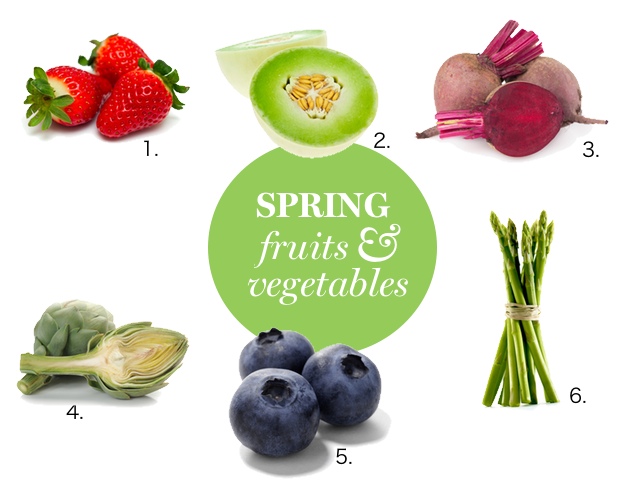
Image source: https://www.washingtonian.com/wp-content/uploads/2013/04/2013-4-4-SpringProduce.jpeg
According to research from the Centers for Disease Control and Prevention (CDC) only one out of ten Americans eats enough fruits and vegetables. Consumption varies throughout the country, however all regions fall short of recommended goals. The federal recommendation for fruit is 1-1/2 to 2 cups a day while vegetables weigh in at 2 to 3 cups daily. How much is enough? If you eat one banana and one-half apple, you've met your fruit goal. You can knock out the veggie recommendations by adding a side salad or slaw with lunch and two vegetables with dinner. It is easy and this is the season when we start to see more of the fresh items that have been out of season. Although most fresh produce can be found year 'round, the price is generally better when they're in season. And remember you can use canned, frozen or dried produce e to eat the amounts recommended each day.
In addition to the perennial favorites of asparagus, artichokes, chives, strawberries and grapefruit, I'm sharing information on in-season choices that may not be top-of-mind. One of my goals is to share options and encourage you to eat from a variety of foods to make a colorful plate.
New Potatoes are often red-skinned, small and freshly harvested. You can find them in the market April to July. They retain their shape when cooking and are a sweeter potato because their sugar content is not converted to starch yet. They are a good source of Vitamin C, and low in fat and calories. They also contain antioxidants which can help prevent hypertension and protect against heart disease and cancer.
Snap Peas are in the legume family. They are in the market March to June. The crisp pea pods do not require shucking before cooking and are a wealth of vitamins and minerals that are beneficial to both bone and heart health. They contain Vitamins A, C, B6, folate and vitamin K. These peas are low in calories and are a source of fiber.
Cara Cara Oranges are available December through April. These sweet and tangy oranges are seedless which makes them very easy to use as a snack or in salads. They are high in vitamin C with a reddish-pink flesh. The flavor is similar to strawberries and cranberries.
Kumquats are miniature oval-shaped oranges, which have a thin sweet skin that can be eaten. They also contain seeds which you will want to avoid because they are bitter; remove them before eating or cooking. They're available January to June and make a great snack or addition to breads and muffins. This bite-size citrus is a good source of dietary fiber; vitamins C and A. Eight whole kumquats contain just 18 calories.
As you increase the fruits and vegetables in your daily diet, consider these foods and try new varieties found at the supermarket. As you try new items, think of them as samples-you just may like them enough to add to your menu often.
